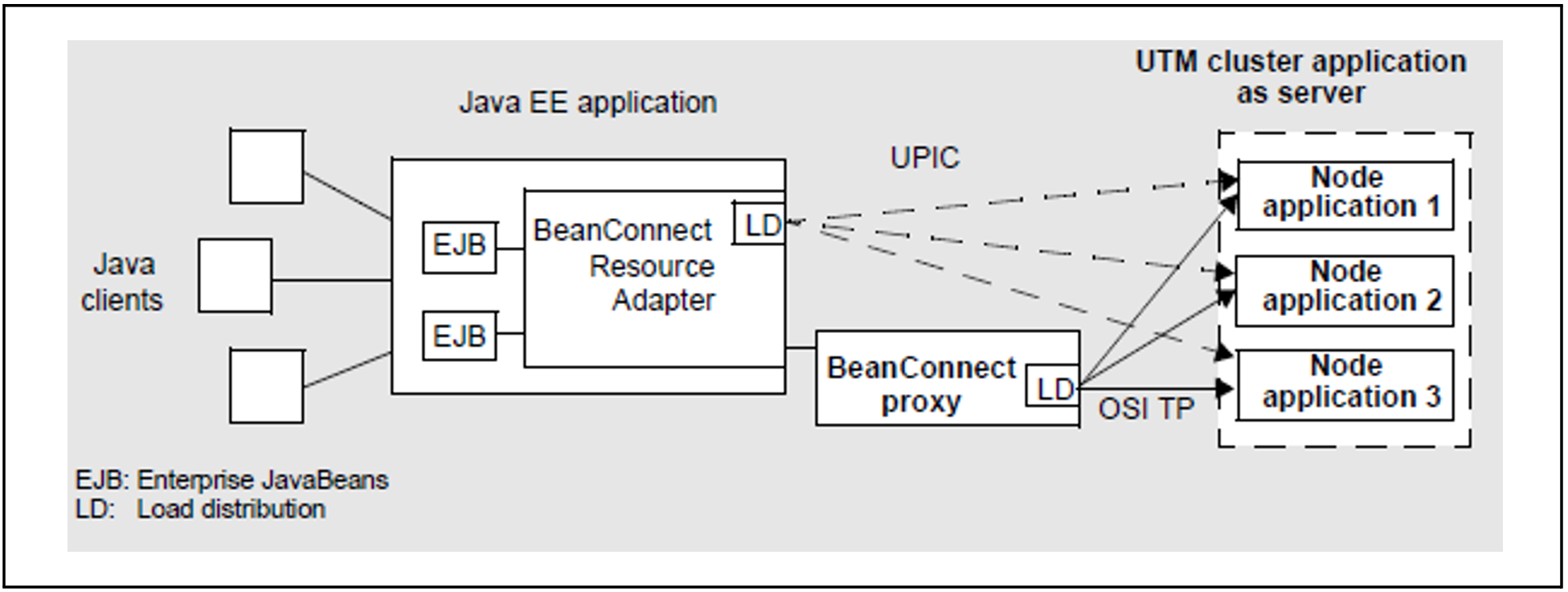A UTM cluster application in a connection can function as a server outbound communication and as a client for for inbound communication, with an application (Enterprise Java Bean, EJB) in the Java EE application server starting communications by sending a message to the UTM cluster application. From the perspective of the Java EE server, this is outbound communication. In the case of outbound communication, it is possible to address the individual nodes of the UTM cluster application using the round robin method. The connection can be implemented either as a server-server link via OSI TP (see also section “Linking via OSI TP” (openUTM as a server for Java EE application servers)) or as a client link via the UPIC protocol.
This connection is implemented via the BeanConnect product, see the figure below:
Figure 10: UTM cluster application as server in a Java EE application server
In the case of a connection via OSI TP, load distribution (LD) is performed in the BeanConnect proxy and the round robin method is used.
In the case of UPIC links, the load distributor in the BeanConnect Resource Adapter selects the connections on a random basis.

